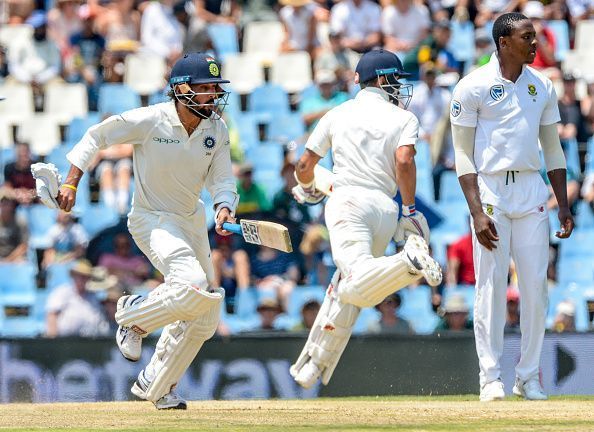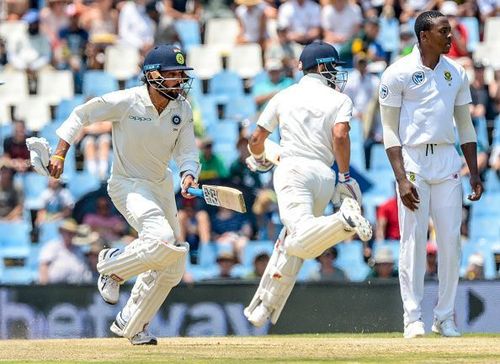
Team balance has played a part in India’s loss in South Africa

India’s journey to South Africa for the three-Test series was an eagerly awaited affair as the first and second ranked sides were to lock horns. Many believed that this was the best possible opportunity for India to win their first Test series in the Rainbow Nation because of the strength of the home side, or the lack of it.
But, the story has repeated itself as India go into the third Test having already lost another series in South Africa.
In the post-mortem, we talk about the batting failures, shoddy catching and of course the team selections in both the Test. But not many have spoken about the real problem, which is the balance of the side. So, let’s look at some issues with regard to the balance of the side that was picked for the first two Tests:
Five bowler theory
Yes, it is important to pick 20 wickets to win a Test but let’s not forget that the team should also score runs and at the end of the day whichever team scores one run more than the opponent, win the match.
In conditions that are helpful for the bowlers, I always feel that a team should go in with four regular bowlers and if someone in the top 6 can bowl a few overs, it’s a bonus. Also, you are expected to bowl the opposition out inside 80 to 90 overs, so there is always going to be one bowler who has bowled very less.
India managed to pick 20 wickets in both the Tests but they were very clearly short of one batsman.
Hardik Pandya’s inclusion has deprived India of one batsman
While no one expected Hardik Pandya to play the first Test, he was drafted in by Kohli which was a very bold move. Even though he played well for his 93 in the first innings, his inclusion has meant that India have gone in with only 5 regular batsmen.
If you are an all-rounder on the Test side, you should either be good enough to bat at No 6 or be one of the four bowlers. I am afraid Pandya is either of those right now. With him included in the side, India have looked for someone else who can bat at 6 and that’s where the balance has been affected.
Why are 6 batsmen necessary in South Africa?
Very rarely you would see a team’s score as 100-0 in these conditions. 8 out of 10 times the scorecard would read 30-2 or even three down for that score. If you are playing only five genuine batsmen, all of a sudden that pair becomes the last recognised and already you are playing catch up so early in the Test match.
Ideally, the No 6 should be a stroke maker who has the ability to bat with the lower middle order and even the tail. Even though Rohit Sharma scored that 40 plus in the second innings when the writing was on the wall, the approach of playing aggressively made a lot of difference. Rohit can play freely when given the license to play in that manner and that can happen when he bats at No 6 because he is very likely to play with the lower middle order.
My XI for the final Test
Vijay and Rahul will continue to open the batting, Pujara and Kohli to bat at 3 and 4. Ajinkya Rahane should be included in the side and he comes in at 5, so you have someone who is technically sound coming in if there is an early wobble. Rohit Sharma to bat at 6 and as I said earlier, he should look to be positive in his stroke play. Dinesh Karthik, who replaced the injured Saha will get into the side after Parthiv Patel’s horror game behind the stumps at Centurion. So, you have 6 regular batsmen and a keeper who can bat as well.
Ashwin walks in at 8, who has had a decent outing with the ball this time around in South Africa. Not to forget, he has also looked solid with the bat so far. Out of 4 bowlers Bhuvneshwar Kumar, Ishant Sharma, Mohammad Shami and Jasprit Bumrah, three would be picked automatically.
Six batsmen, one wicket keeper, three pacemen and a spinner would be my combination for the final Test at the Wanderers in Johannesburg. What will be yours?